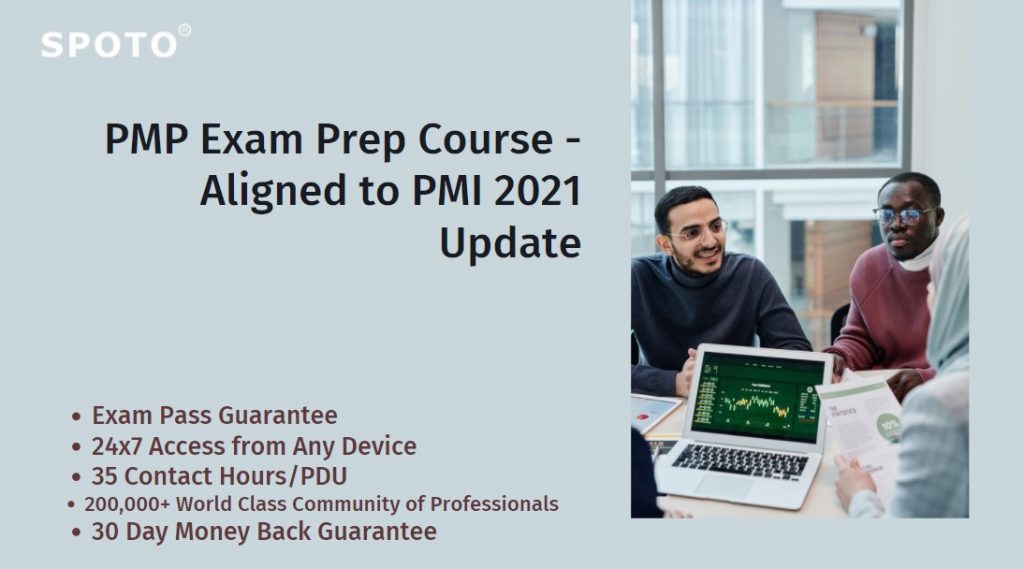Success on the Project Management Professional (PMP®) exam requires more than just knowledge; it also requires confidence. Confidence is more than just feeling good about yourself; it is predicting future success based on multiple previous iterations of success.
Time management is one of those areas where you can achieve success. Time is a major constraint on the exam, and your main ally is control. As you practice time management techniques in your practice sessions, you’ll have a better chance of successfully managing time during the actual exam, resulting in less stress and greater control.
There are two major areas where you can manage time: during the exam and during the question. You can also combine these simple strategies to create a comprehensive strategy that is simple to implement and replicate. Time is not your adversary; when actively managed, you will feel at ease with the constraint and effectively use the time where it will benefit you the most.
Exam Time Management
You must manage the entire four hours and consider it to be a four-hour buffer (think “critical chain” and project buffer). Each question deducts 1.2 minutes from the buffer until you run out of questions at the same time you run out of time.
You should keep track of your progress in the same way that you keep track of TCPI—what is the total amount of exams left, based on the total amount of time remaining? This will tell you the average rate at which you answer questions and how much time you can allow yourself per question for the rest of your exam.
Another advantage of tracking your rate in this manner is that it distracts you from worrying about whether or not you will pass the exam. Working on this method during your practice runs, whether 20 or 200 questions, will make it a fairly normal practice when it comes time to take the actual exam.
Control Question Period
Each question, no matter how difficult or easy, deserves 1.2 minutes. It will help you to identify questions that are easy for you early on, so you know you’re reserving extra time for the more difficult ones. Allow yourself a few seconds to determine whether the question appears difficult. This is not a waste of time; when done correctly, it sets the stage for the question to be answered quickly.
When treating your total time as a reserve, it may be advantageous to find a way to move the more difficult questions to the end. This is known as a mark for review.’ Normally, you will answer questions in order, and when you submit them, they are finished and will never be seen again. You bookmark the questions and answer them at the end if you use the mark for review.’
A good rule of thumb to follow is to not mark more than 30 or 40 questions for review. If you do, you will almost certainly run out of time. Another smart strategy is to choose an answer before marking it for review. When you mark a question, the answer is saved, and if you run out of time, these marked questions are graded as well (and of course, your chances are better than if they were left blank).
Question Period Prioritization
Putting all of these procedures together takes some practice, but it can be done fairly quickly. As you progress through the questions, make notes on your blank paper of exam milestones against time consumed and left. Determine the amount of effort required to complete a question and prioritize it. Save the most difficult questions for last. All that remains is for everything to go smoothly.

You must determine how long certain types of questions will take within seconds of reviewing any active question. The best way to do this is to divide them into three groups:
I know what you’re thinking: respond quickly. Don’t second-guess yourself; many applicants have stated that they changed answers that they initially answered correctly.
I have no idea: Please respond to these as soon as possible. To begin with, you don’t want to waste time on questions that will only cause you to stall. Second, you can sometimes use the structure of the answers to determine which answer is an outlier. “One of these things is not like the other” and “process of elimination” are frequently useful in this situation.
50-50: These are the ones you should put more effort into. You’ve already eliminated two options, so you have a 50 percent chance of getting it right, and you could improve with a little more research. Mark these for future reference. Remember to save an answer when you mark them; if you do this, and you run out of time, you’ll get half of these correct.
In Conclusion
It is advantageous to actively manage time on the exam. A straightforward approach will give you a sense of greater control and confidence. Knowledge isn’t the only thing you can learn on the exam.
The entire exam can be viewed as a backlog of work that must be completed within a specific time frame. Through questions, you can manage these two components for average velocity and potential deceleration. Prior to delving into the question, each question can benefit from a small amount of thoughtful analysis.
By approaching both of these concepts with an active strategy, taking advantage of any gains in time reserve, you will be able to use time more effectively and feel more confident about taking the exam.
Try our free PMP practice exam to see how you fare. You can skip questions and return to them once you’ve completed the ones you already know. We recommend that you jot down which ones you skipped so that you can return to them later. (Due to manually clicking back to skipped questions, the timing will be more truncated than on the real exam, but you’ll get the hang of managing the question time and exam time.)





